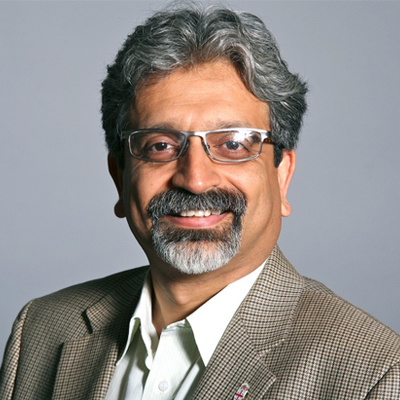Efficient and inexpensive solar cells through materials and processing innovations
Solving the world’s energy problems is critically important. Solar energy is the cleanest form of renewable resource and it is potentially the most abundant. For example, the potential solar energy capacity in the US alone is 80 terawatts, which is more than all the other renewable sources combined. However, the bottleneck in solar cells is the cost. Therefore, highly efficient, low-cost solar cell technology is the “holy grail” for scientists and engineers. Not surprisingly, ‘Making Solar Energy Economical’ is one of the fourteen Grand Challenges identified by the U.S. National Academy of Engineering. Dr. Nitin Padture, Professor of Engineering at Brown University, uses his expertise in materials science and engineering to contribute towards solving the world’s energy problems. His main motivation is to be able to perform basic and applied materials research that will have a lasting impact on the global community. Using his nearly twenty-five years of experience as a materials researcher, Prof. Padture is likely to make significant contributions that will be monumental for energy use worldwide.
With an impressive combination of expertise in materials synthesis/processing, characterization, properties-measurements, Prof. Padture is seeking solutions to answer some of the most challenging scientific questions with a refreshing perspective. Prof. Padture firmly believes that “all wonderful things come out of basic science.” Therefore, his interests are specifically targeted at the basic science required for future technological applications. Thus far, he and his team have made some key advances in the processing of a new type of breakthrough solar cell -- perovskite solar cell -- that is potentially low-cost and highly efficient compared to other emerging solar cell technologies. Also, they can be made colorful and semitransparent for integration into building architecture. Additional research will help elucidate the underlying scientific principles to improve existing processes or create new ones and demonstrate feasibility of scaling the process.
Current research includes:
-
Processing Innovation: Prof. Padture and his team are developing new materials and processes for solar cells called perovskite solar cells. It is their hope that with improved processes for creating these cells, they will provide a solution to efficient and inexpensive solar cell technologies. Thus, Prof. Padture’s materials science could be a necessary step towards sustainable energy.
-
A Multidisciplinary Approach: Prof. Padture’s research is made possible by the interdisciplinary approach of his lab. By approaching solar energy solutions from disciplines including physics, chemistry, electrical engineering, and materials science he and his team are illuminating new ways to approach the energy crisis.

Bio
Prof. Nitin Padture has always had an innate curiosity about how things work. As a child, he loved to tinker and build working models like an electric motor, generator, and telephone. Even when asked at five years old what he wanted to be when he grew up, Prof. Padture confidently told his parents, “an engineer!” As he grew older, he became more curious about how materials worked specifically. He asked questions that included: Why are metals tough but ceramics brittle? Why does copper conduct electricity, but wood does not? And why is glass transparent while metals are not? Prof. Padture was able to find answers to many of his questions during his undergraduate and graduate studies in materials science & engineering.
As a young research scientist, Prof. Padture spent much of his career studying the incredible properties of advanced ceramics, which he still does. Now, as a tenured full professor at an Ivy League university, he is also hoping to help solve the most pressing problems of our time: energy. Motivated by the challenge of energy solutions, he is hopeful that his research will help create an impact on the future.
Aside from research, Prof. Padture has a passion for riding motorcycles. Like a proud father, he describes his “gorgeous” Italian sport touring bike with enthusiasm. Additionally, his Indian upbringing instilled a love for Indian classical music and food/cooking.


